From the very beginning in 1910, Chanel has been a fashion brand that delicately balanced-ground breaking innovation with the highest quality standards. For even as Gabrielle “Coco” Chanel broke the existing rules, quite literally changing the way women dressed, smelled and looked, she demanded that everything Chanel created be made of the best materials with the best craftsmanship and precise attention given to even the smallest detail.
After 84 years, Chanel is now the epitome of “classic” luxury that is prestigious but never stuffy. The tradition of simple elegance delivered with the highest quality has been maintained and treasured by management-chairman Alain Wertheimer and the Wertheimer family.
Change through Evolution for Chanel
While Coco Chanel’s vision and philosophy continue to guide her namesake company, there are changes. “Chanel is now a global business,” said Laurie Palma, senior vice president of fragrance and internet marketing, Chanel Inc. She added, “And there are more product categories. It is now a dominant luxury brand.”
Today, Chanel includes: fashion—ready-to-wear, haute couture and accessories; eyewear; fragrance, color cosmetics and skin care; timepieces and fine jewelry.
Chanel is also expanding its reach to include a broader audience with some of its beauty products. “Chanel (fragrances) were seen as aspirational,” said Lyle Saunders, vice president of Chanel creative in the U.S. “Chance (launched in 2002) is more accessible,” Saunders added. The campaign features a younger model and is targeted at a younger woman.
“Change at Chanel is more about evolution,” Saunders noted. “The brand is always modern and ahead of the curve, but changes are subtle and in keeping with cultural change, not just change for the sake of change.”
Saunders pointed out that Mlle Chanel was wise as well as revolutionary. She believed in the saying by Jean Baptiste Alphonese Karr, “plus ca change, plus c’est la meme chose,” (The more things change, the more they remain the same).
 |
 |
 |
 |
Mlle Chanel and Beaux created and launched four fragrances in the five years immediately following No. 5: Cuir De Ruissie in 1924; Gardénia in 1925; Bois des Iles in 1926; and No. 22 in 1928. |
Chanel Taps Chiquet For Top U.S. Leadership Post
In Spring 2003, Chanel named Maureen Chiquet president-elect of Chanel Inc. She then replaced Arie L. Kopelman, who retired in 2004 and continues to serve as vice chairman of Chanel Inc.
Chiquet, an alumnus of Yale, served as president of Banana Republic before she took the appointment at Chanel. She had started her career with L’Oreal in Paris where she was a brand manager. In 1988, she moved to San Francisco to join The Gap as a merchandise trainee. From 1994 to 2002, Chiquet was responsible for building the Old Navy brand. In 2002, she was named president of the Banana Republic.
|
Coco Chanel’s Words of Wisdom
|
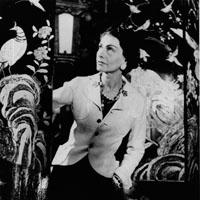 |
|
Coco Chanel
|
Mlle Chanel is almost as famous for what she said as she is for what she created. Here are a few of her most perceptive quotes.
• “A woman can be over-dressed, never over-elegant.”
• “Luxury is the opposite of vulgarity.”
• “If you want to be irreplaceable, you have to be different.”
• “Success is made with what can’t be learned.”
• “Elegance is when the wrong side is as beautiful as the right side.”
• “You cannot have fashion out of touch with street life.”
• “Fashion passes,
style remains.”
• “Perfume is of the utmost importance. In the words of Paul Valéry: ‘A woman perfumed badly has no future.’”
• “When you give women back their mystery, you give them back their youth.”
• “The poetry of fashion lies in creating illusion.”
• “Nature gives you your face at twenty. Life shapes your face at thirty. But the face you have at fifty is the face you have earned.”
• “Let my legend makes its way in life. I wish it a long one.” |
|
No. 5 Sets a Course of Beauty Innovation
Chanel’s fragrance business began in 1921 with the creation of No. 5, which is still the world’s best selling fragrance. Mlle Chanel asked perfumer, Ernest Beaux, to create a scent that “reflects my personality, something abstract and unique.” She chose the fifth fragrance that Beaux presented to her and Chanel No. 5 was born. A blend of 85 ingredients including aldehydes, May rose and jasmine, No. 5 was the first perfume not intended to represent the essence of a single flower.
The two creators Chanel and Beaux launched four more fragrances in the next five years: Cuir De Ruissie in 1924; Gardénia in 1925; Bois des Iles in 1926; and No. 22 in 1928. All are still available—the first three as the rue Cambon collection.
After World War II, Mlle Chanel re-established her fashion house and in 1966, Chanel Pour Monsieur fragrance was launched. In 1976, Chanel No. 19 was created for Mlle Chanel’s birthday and makeup joined the beauty line.
Coco Chanel continued to lead her fashion house actively until her death in 1971. After her death, womens and mens fragrance launches slowed as it became imperative that new products be created and introduced only if they met the highest Chanel standards. Cristalle eau de toilette was introduced in 1974; in 1981 Antaeus fragrance joined the line. In 1983, Karl Lagerfeld joined Chanel as chief designer and the house of Chanel was revitalized.
In 1985, the fragrance Coco was unveiled. Egoïste Parfum and Pour Monsieur Concentré followed in 1991. In 1994, Egoïste Platinum and Cristalle Parfum were launched. Since then, new Chanel fragrances have joined the line more frequently: Allure in 1996; Allure Homme in 1998 and Allure Homme Sport in 2004; Une Fleur de Chanel Limited Edition in 1999; CoCo Mademoiselle in 2001 and Chanel Chance in 2002.
Today, all fragrances are developed by Jacques Polge, the “Nose” of Chanel, who joined the company in 1978.
Packaging for all beauty products originates in Paris with Jacques Helleu, Chanel’s artistic director, who knows precisely how to design packaging that is modern and elegant, while maintaining the brands distinct esthetic.
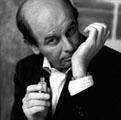 |
 |
 |
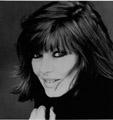 |
 |
| Jacques Polge |
Jacques Helleu |
Dominique Moncourtois |
Heidi Morawetz |
Maureen Chiquet |
 |
| Laurie Palma |
 |
| Elizabeth Mankin |
Science at Chanel: Advanced and Global
Chanel takes its beauty and skin care products very seriously. Dr. Michael Steiger, senior vice president global research and technology, oversees all Chanel Research and Technology Laboratories as well as the CE.R.I.E.S.
The CE.R.I.E.S. (Center for Epidermal and Sensory Research and Investigation) was established in Neuilly-sur-Seine, France, in 1991 and dedicated to the “investigation of healthy skin through clinical and biophysical assessment, statistical analysis and fundamental research.” Dr. Erwin Tschachler, Professor of Dermatology at the University of Vienna, Austria, has scientific responsibility for the global research activities of the CE.R.I.E.S. The center consists of three units: a clinical unit, a biophysical unit, and a biometrics unit. In this way, it brings together specialists from diverse disciplines, whose activities focuse on developing methods for describing and “diagnosing” healthy skin.
The CE.R.I.E.S. is a “laboratory without walls,” that links the international scientific community with the world of Chanel cosmetics and skin care, according to Chanel.
Chanel Research and Technology Laboratories, based in France, Asia and the U.S., are centers where products are developed and tested. “In skin care, products are research driven,” said Peter J. McHale, vice president of research and development for Chanel Inc. Based at the U.S. research center in Piscataway, NJ, McHale explained that Chanel formulations are backed by the very latest science from the CE.R.I.E.S. as well as Chanel’s research efforts conducted at the R&T labs. “The direction from the very top is that we should take a lot of science and build a product by distilling the science down to the most important findings. Chanel is very serious about skin care and committed to being a major player in quality, efficacy and safety,” stressed McHale. “It’s a matter of trust. Consumers won’t get the same kind of immediate result with skin care as they get with our fragrances and color cosmetics. The skin care products take time. Consumers buy Chanel because they trust the brand. We take that trust very seriously.”
 |
| Ruban Perlé, a creamy powder for lips, cheeks and face, is the Star product for spring 2005. |
Hydramax + Serum, Intense Moisture Boost and Hydramax +, Moisture Boost Cream, new for Spring/Summer 2005, address key factors identified by the CE.R.I.E.S. necessary for “securing skin’s perfect moisture balance,” according to Chanel. Loricrin and Involucrin are ‘water-trapping’ proteins and B-glucocerebrosidase is an enzyme, also important for water retention, are key targets in the Hydramax formulas.
In addition to labs engaged in product development research, the Piscataway facility has laboratories set up to test formulas in which the product is filled in proposed packaging and then put through an accelerated aging process to see how it will function over time and under various conditions.
Other scientific stations in Piscataway include the following. A package compatibility lab assures the right materials are used for each container and formula combination. A biological services lab tests for micro-biological contaminants and the effectiveness of preservatives. An analytical services lab solves problems by examining formulas and ingredients at the most basic molecular level. A quality assurance lab tests all raw materials and samples from every batch of bulk to assure the highest standards are maintained. A color lab creates new color cosmetic shades and formulas. A cosmetologist tests all the various products on Chanel volunteers for real consumer feedback, makes suggestions and retests. A cellular biology lab that works closely with The CE.R.I.E.S. opened in December 2004. It screens potential active ingredients for safety and efficacy.
“Chanel does most of its own testing,” McHale emphasized. “We have three PhD’s on staff in the cellular lab here. The CE.R.I.E.S. does pure research, then our labs here and in France find practical applications for their findings. At Chanel, the stress is on long term vision and long term success.”
Color Cosmetics: The Perfect Selection
Color cosmetics have a long tradition in the Chanel brand, according to Elizabeth Mankin, vice president of Beauté marketing for Chanel Inc., New York. “Coco Chanel introduced a small line of color products in the 1920s. She was the first woman to sport a tan and wear red lipstick and red nail lacquer.” Chanel Beauté, including color cosmetics and skin care, launched in the U.S. in 1976.
All product creation starts in France. Dominique Moncourtois, the international director of creation and makeup, and his close collaborator, Heidi Morawetz, the director of the makeup studio, have been the creators of Chanel Maquillage in Paris for more than 30 years. Together, Moncourtois and Morawetz are the creative driving force behind new Chanel makeup products.
The color cosmetics and skin care/treatment line of Chanel includes approximately 400 products today, according to Mankin. “There are enough products and shades to make every woman beautiful, but not every possible shade. Chanel is the ultimate beauty editor. It (the color line) is true to the Chanel spirit and vision,” she stressed.
New products and shades are launched four times a year corresponding to the four seasons. Each new collection takes approximately one year to develop. “We introduce a Star product with each collection,” Mankin noted. For Spring 2005, Ruban Perlé, is the Star product, a limited edition that rolled out in January 2005. Ruban Perlé is a creamy, radiant face powder that draws its inspiration from the fabrics, beautiful ribbon work and pastel shades of Chanel couture.
Presented in a gleaming black compact, with subtle concave curved rather than straight sides, Ruban Perlé is available in two shades—Moonlight (White Rose) and Sunlight (Golden Apricot)—that are presented in delicate ribbon basketweave textured surfaces.
“Our customers watch for these Star products each season and they are often sold out before the season is half over,” noted Mankin.
The future is bright for color at Chanel. “Chanel will continue to evolve as technology changes,” said Mankin. “There is constant innovation and a keen awareness of what luxury means that is essential to Chanel. We seek to have a lovely little surprise or an extra touch in every product that keeps the brand relevant and true.”
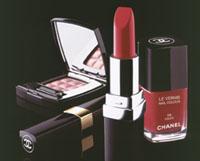 |
| All Chanel Maquillage is directed from Paris by Dominique Moncourtois and his close collaborator, Heidi Morawetz. |
Packaging Design Centered in Paris
The history of Chanel No. 5 is a good example of how packaging works at Chanel. The formula of No. 5 is the same today as it was in 1921, but the classic bottle has evolved over the years. “Today’s No. 5 bottle is more streamlined, although still basically the same flask-like shape. The cap has changed the most,” explained Palma. She added, “Unlike many of the ornate bottles at the time, it really stood out from the crowd when it was first launched. In every way—the fragrance itself, the name and the package—all were revolutionary.”
“The design for Chanel packaging comes out of France, where the team is headed by Jacques Helleu, creative director for Chanel worldwide,”said Scott Widro, vice-president of Material Management based in Piscataway, NJ. “Mr. Helleu and his team collaborate with Lyle Saunders, vice-president of creative in the U.S., to insure that our creative is globally consistent. Unique to our beauty business, Chanel product development is handled through our color studio in Paris where concepts for products and packaging originate, overseen by Dominique Moncourtois. We engineer the package in collaboration with our French package development and engineering team, purchase it (the various components), handle production planning and track all new product introductions,” Widro said.
 |
| The Chanel No. 5 package has evolved through subtle changes to the bottle and cap to its present form. |
 |
| Chanel’s classic fragrance bottles are variations on a square except for a circle for Chance. |
Nothing happens by chance at Chanel. Dedication to brand quality and consistency comes from the highest levels of management. “The private ownership of Chanel is key to the company’s commitment to maintaining the brand equity and image,” stated Widro. He explained, “The principle behind packaging is simple geometric shapes. The fragrance bottles started with No. 5 and a square, then evolved into various rectangles and now, with Chance, we’ve moved to a circle. All of the bottles look simple and are beautifully executed. They may look simple but can be very complicated. And Chanel standards are very high for quality.”
For Chanel, fragrances are not launched for the short term, but rather become part of the line on a virtually permanent basis. But as formulas stay the same, packaging is refreshed as needed. Widro recounted several changes. Chanel No. 5 had a spray EDT that was a refillable glass bottle held in a black plastic sheath topped with a large gleaming gold cap. That package was redesigned in 2003 and is now a glass bottle with a spray-through cap, he explained. The smallest detail is given attention and a quality execution, such as the copy and decoration on the bottom of the bottle, which is silk-screened. The color of each fragrance formula has been chosen to appeal to its audience and to support the personality of the particular fragrance.
The packaging of Chance was a particular challenge, according to Widro. “Creating the simple glass circle and the metal band which encloses it was very difficult. The band is brass and is hand polished, colored with a shining silver finish and then coated again for protection. The band fits the circumference of the circular bottle perfectly—not loose enough to slip, not tight enough to crack the bottle. It is held together with a metal plate that snaps into place and holds the two sides. “The plate is embossed with product information. The assembly is critical,” he stressed. Even the way the product name is silk-screened on the front of the bottle is more complicated than it looks. CHANCE appears in one shade precisely above CHANEL in a different shade. Widro added, “The wording must be perfectly registered and aligned.”
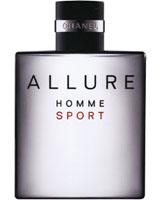 |
| Allure Homme Sport is a glass bottle with a metallic spray finish, topped by a complex, five-piece cap. |
The package for Allure Homme Sport appears to be an aluminum bottle but is actually a glass bottle, which is sprayed to have a brushed metal finish and then silk-screened, even on the bottom. Widro explained, “The cap is actually five pieces—an inner cap, an internal weight, two outer halves and a band that runs around the center—that are assembled before they are delivered to Chanel.
“The folding cartons are also exquisite,” Widro noted. “From the printing and foil stamping to the lamination and UV coatings, Chanel takes the extra step to make them special. Even when the consumer opens the carton, the experience must be ‘Chanel.’
 |
 |
| The packaging for Chanel No.5 Seduction Collection is a prime example of new packaging that is ’absolutely Chanel.’ |
The carton for Gardenia, with an embossed flower, reflects the brand’s attention to every packaging detail. |
“The packaging for Chanel No.5 Seduction Collection is a prime example of new packaging that is ‘absolutely Chanel,’” stressed Widro. The three-product collection, which launched in fall 2004, includes a 1.7oz. Sensual Elixir in a rectangular bottle with a stopper, Velvet Body Cream in a 5oz. jar with black injection-molded, UV coated cap and a 13.5oz. Velvet Bath Milk in a glass bottle with a compression molded, black cap. All the containers are crystal clear, thick-walled glass molded in classic Chanel shapes. The caps for the Body Cream and Velvet Bath Milk are glossy black plastic, while the cap for Sensual Elixir is a classic perfume glass plastemeri stopper. The Velvet Body cream glass jar is finished with a clear UV coating to protect the contents. Widro said, “The UV coating is typical of Chanel. It is an extra step we take for our quality and brand image. The consumer may never know that we have UV-coated the jar, but they will reap the benefit.”
 |
| Packaging for Précision is sleek and tailored. |
Skin Care Packaging Stresses Form and Function
Chanel’s Precision skin care line began with about 20 products and has been expanded to include approximately 56. There have been subtle changes in the packaging and Chanel’s usual attention to detail, according to Widro. Today’s cartons include the color-coded name of the particular product. All the containers feature a soft-touch finish and all the jars are foil-sealed. He stressed, “The consumer should know she is getting a pristine product.”
The new skin care products for spring 2005 also demanded special packaging attention. “Chanel has made airless pump packages an important part of the line,” said Mankin. “It dispenses a precise dose and eliminates air contamination. All of the Serum products come in airless pumps as well as one of the eye products. The packages are also portable and spill-proof.”
Consistent Global Packaging
About four years ago, Chanel began an initiative to “harmonize and globalize all our beauty products and their packaging,” said Gene Berlanti, senior vice president of operations at Chanel’s Piscataway location. Until then, if a package were filled in the U.S., the package would be different in subtle ways from the same product filled in France. “The company decided that the same product should look exactly the same no matter where in the world our customer bought it,” Berlanti said. “It was a huge job but now more than 95% of all the beauty products look the same everywhere.
 |
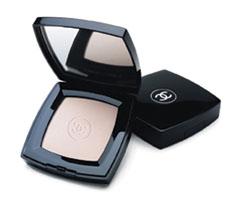 |
| Rouge Double Intensité Ultra Wear Lip Colour, new in January 2005, is available in six shades. |
Pureté Mat Shine Control Powder, launching in May 2005, controls shine and protects with an SPF 15. |
Preferred Suppliers Provide Global Quality
Because quality is so essential to Chanel, the company deals with a pool of preferred, qualified suppliers that have proven that they will provide components that meet the company’s high standards.
“We want to be important to each of our suppliers,” Widro said. “Chanel controls the design aspect, although we do look at new ideas a supplier might have for an innovation. In the U.S., we only have 30 or 40 suppliers for all the various components needed that can provide the quality, service, reliability and cost we demand—but the quality is first.”
We are always seeking new suppliers that can provide the level of quality we need and are considering China as a source for some commodity components. But we will only source there if it’s prudent and helps Chanel.”
Manufacturing and Distribution
Most Chanel beauty products for the U.S. market are formulated, filled and distributed at the Piscataway location. There are three other manufacturing sites in France. The New Jersey operations, which are spread out in two large buildings linked by an elevated bridge, cover 550,000 square feet, made up of offices, laboratories, manufacturing and filling operations, warehouse and distribution services.
Approximately 750 employees at the Piscataway location are engaged in all aspects of making Chanel beauty products and getting the products to their respective markets. Worldwide, Chanel employs approximately 10,000; all U.S. operations tally about 1,300.
Because all types of products are made at the facility, there are automated and semi-automated filling lines as well as areas where the work is done by hand.
Once the products are filled and placed in secondary cartons (some are first placed in velvet pouches), they are placed in cartons and moved across a unique tunnel in the bridge to the warehouse, where an automated system places them in assigned locations for easy and sure retrieval. As needed, the products are taken to a position where staff “pick and pack” items to fill orders. As an item is moved from its carton to an order box, it is scanned in order to maintain an accurate, real-time inventory.
When an order is completed, it is packed for shipping, sealed and labeled and then joins others on a conveyor that deposits each in the appropriate station to be wrapped with others going to the same retail distribution center.
Controlled Distribution & Merchandising
In the U.S., Chanel Beauty is carried in approximately 800 doors, according to Mankin. It is a smaller distribution than the fragrance line and is controlled very carefully, according to Mankin. Worldwide, the line is available in 80 countries on five continents.
“How Chanel is merchandised is clearly specified for every retail partner,” Mankin added. In addition to Chanel boutiques in the U.S., the line is available in department stores, including Saks, Neiman Marcus, Nordstrom, Bloomingdales and Federated stores. It is also available in some specialty stores such as Sephora, Barney’s and Bergdorf Goodman and online at www.gloss.com.
Chanel has been redesigning its beauty boutiques, of which there are 100 worldwide. “There is a Chanel boutique at the Barcelona Airport,” Saunders said, “that is within the Duty Free shop but appears to be a distinct store. It works beautifully and looks great.” A boutique at Harvey Nichols in London and the installation at Bloomingdale’s in New York City are global flagships representing what Chanel will look like at retail, according to Saunders. The Harvey Nichols boutique presents the brand’s complete collection in the Chanel Colour Studio. The Studio offers more than 500 SKUs, with more than a third of them new to the UK.
“The corporate objective is to have consistency in every aspect of the Chanel brand,” he added, “from advertising, to counter displays to package design. The U.S. Creative Services department assures that everything is faithful to the international image of Chanel.”
Commitment to Brand Brings Business Success
Chanel’s beauty business has had back-to-back years of double-digit growth (2002 and 2003), as its Chance became one of the top five best-selling fragrances in the world in 2003 even while Chanel No. 5 continued to be the Number one, according to the company.
In February, Chanel opened its first global boutique at Harvey Nichols in London. For the first time ever, the brand’s complete collection is available at the Chanel Colour Studio. The Studio offers more than 500 SKUs, with more than a third of them new to the UK.
|












